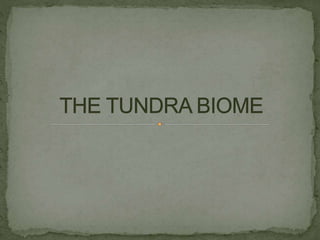The document provides information about the tundra biome. It describes the tundra as having extremely cold temperatures, little precipitation, poor soils, and a short growing season. Plants and animals in the tundra have adapted to these harsh conditions by growing close to the ground, having hairy coverings, and migrating away during winter months. The document contrasts the Arctic and alpine tundra, noting that the Arctic tundra spans northern regions and has permafrost, while alpine tundra occurs at high elevations worldwide.





































